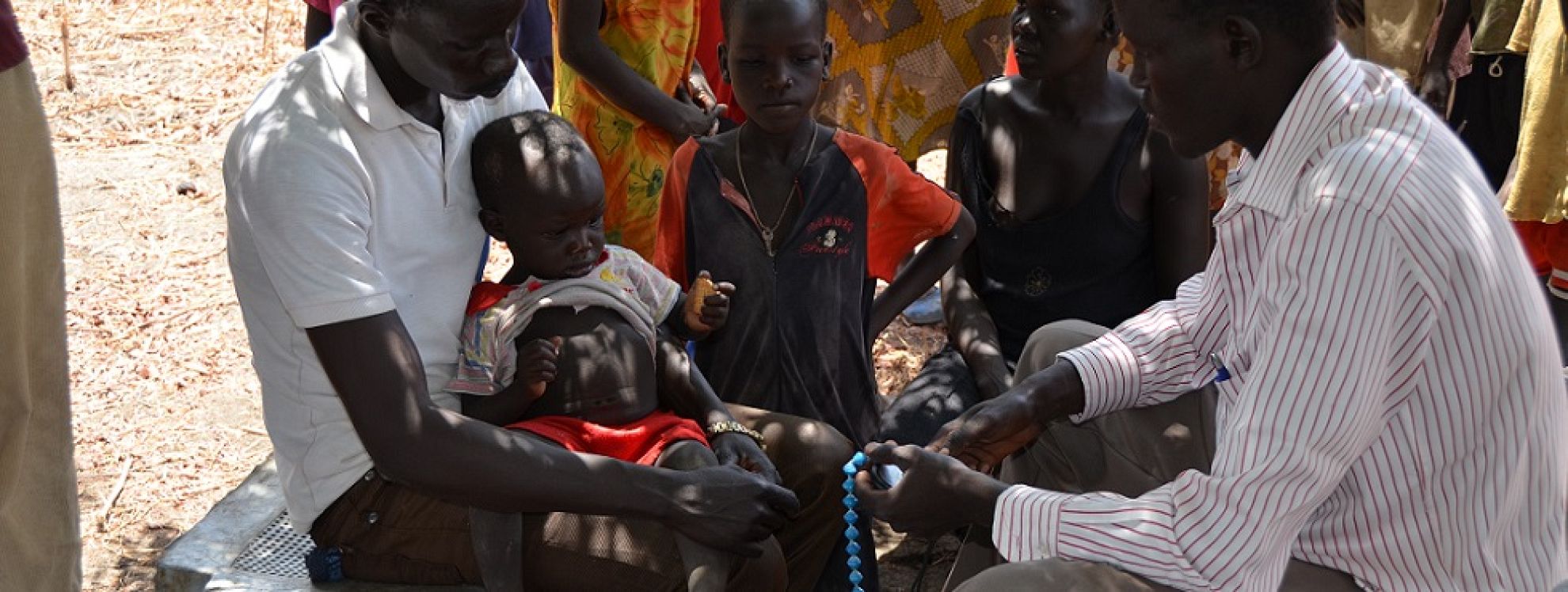
Sharing progress and lessons learnt from the pneumonia diagnostics project in South Sudan
31 July 2015The South Sudan Ministry of Health, in collaboration with UNICEF, held an important technical meeting in Juba from the 23-24 July to discuss integrated management of neonatal and childhood illnesses (IMNCI) and integrated community case management (iCCM) in the country. The meeting was hosted by the Directorate of Primary Health Care from the Ministry of Health.
The meeting was held to discuss:
- the strategy towards national implementation of the IMNCI public health programme;
- the progress made in rolling out iCCM interventions of common childhood illnesses.
Attendees included Ministry of Health officials from the Directorate of Primary Health Care, National Malaria Control Programme, departments within the Directorate of Primary Health Care: Child health department, Nutrition department, Health Education and Health Promotion departments.
A number of child health stakeholders in South Sudan had their representatives at the meeting including United Nations International Children’s Emergency Fund (UNICEF), the World Health Organization (WHO), Malaria Consortium, Population Services International (PSI) International Rescue Committee (IRC), John Hopkins’ Program for International Education in Gynaecology & Obstetrics (JHPIEGO), Management Sciences for Health (MSH), MCHIP/Save the Children, IMA World Health, World Vision, help-ev NGO, Bio AID NGO, Kissito HealthCare International(KHI).
Dr Lena Matata presented on Malaria Consortium’s South Sudan pneumonia diagnostics research project on the second day of the workshop. She provided context on the burden of childhood pneumonia globally and in South Sudan, and introduced current devices available for diagnosis by community health workers (CHWs) – consisting of UNICEF ARI timers and counting beads.
The challenges in using these devices and the need for improved diagnostic tools for diagnosis of pneumonia at the level of CHWs and first level health facility workers (FLHFWs) – was discussed at length. The importance of non-invasive measurement of oxygen saturation levels in severe pneumonia was highlighted.
During the presentation, Dr Matata demonstrated how to use the diagnostic devices, which are currently being evaluated as part of the project. The different devices include:
- a revised UNICEF timer and counting beads for different age groups (under two months, 2-11 months, and 11-59 months)
- a simple mobile phone application to measure respiratory rate
- pulse oximeters for measurement of oxygen saturation levels.
Audience members were able to test the devices by measuring their own oxygen saturation levels.
Dr Matata also shared the feedback received from the CHWs as part of the formative research stage, which was collected through focus group discussions. The aim was to explore the current challenges faced by CHWs in diagnosing pneumonia at the community level and to hear their suggestions on how to make the tools more user-friendly and effective.
Issues raised by CHWs included that they felt that the current devices, when used together, are cumbersome or and difficult to use. They also said that the beeping noise of the UNICEF timer was distracting, that the battery of the UNICEF timer did not last long enough and that the strings on the beads were not sufficiently strong.
The CHWs also gave recommendations on how to improve current devices to ensure that they are simple to use, long lasting and automated. As part of this exercise, the CHWs were also asked to design their own devices.
Dr Matata invited discussion and feedback from the meeting attendees. Comments included the following:
- There is a need for innovative and simple devices which display results in an automated and colour-coded way for better measurements of respiratory rates.
- It was felt that the revised UNICEF timer is an improvement on the current timer but the constant display of the red light will still reduce the lifespan of the battery.
- On the other hand, it was also suggested that the constant display of the red light on the revised UNICEF timer allows the CHW to be sure that the device is still functioning.
- Audience members praised the colour-coded display of the ‘respirometer app’, which displays red for raised respiratory rate and green for normal respiratory rate.
- They also expressed appreciation that the project had managed to conduct residential training near a busy health facility, bringing the CHWs/FLHFWs to Aweil Town for training, with evaluation conducted at Aweil State Hospital.
- The IMNCI/iCCM technical meeting had had discussions on the need for residential trainings near a busy health facility for FLHFWs during the national roll-out of the IMNCI programme.
- The main lesson learnt as a result of the residential trainings was that these trainings can be expensive when accounting for transport costs, accommodation and meals.
- Another lesson is that residential training of female FLHFWs should accommodate mothers with children who need to be breast-fed. It was recommended that they should be allowed to attend the trainings with their children.
The presentation was shared with the Directorate of Primary Health Care, who will be able to disseminate it more widely among child health stakeholders in South Sudan.
Learn more about Malaria Consortium’s pneumonia diagnostics project by visiting the project page here.
Country: South Sudan
Keywords: Digital strategies | Diagnosis
Related content
11 November 2014
Pneumonia prevention and care available for every child is key to defeat world's #1 infectious killer of children
19 November 2014Diagnosing pneumonia - determining the best tools for use in community settings
Latest news
- Malaria Consortium honoured by Ugandan government for contribution to combat malaria23rd April 2024
- International summit calls for AMR accountability in public health interventions21st March 2024
- Global SMC community celebrates new milestone at SMC Alliance Annual Meeting in Nigeria6th March 2024
- Scaling up key interventions could halve pneumonia-related childhood mortality13th February 2024
- Malaria Consortium and eGov Foundation join Mozambique’s national malaria programme to digitalise seasonal malaria chemoprevention campaigns8th February 2024
- World’s first malaria vaccine rollout launched in Cameroon22nd January 2024